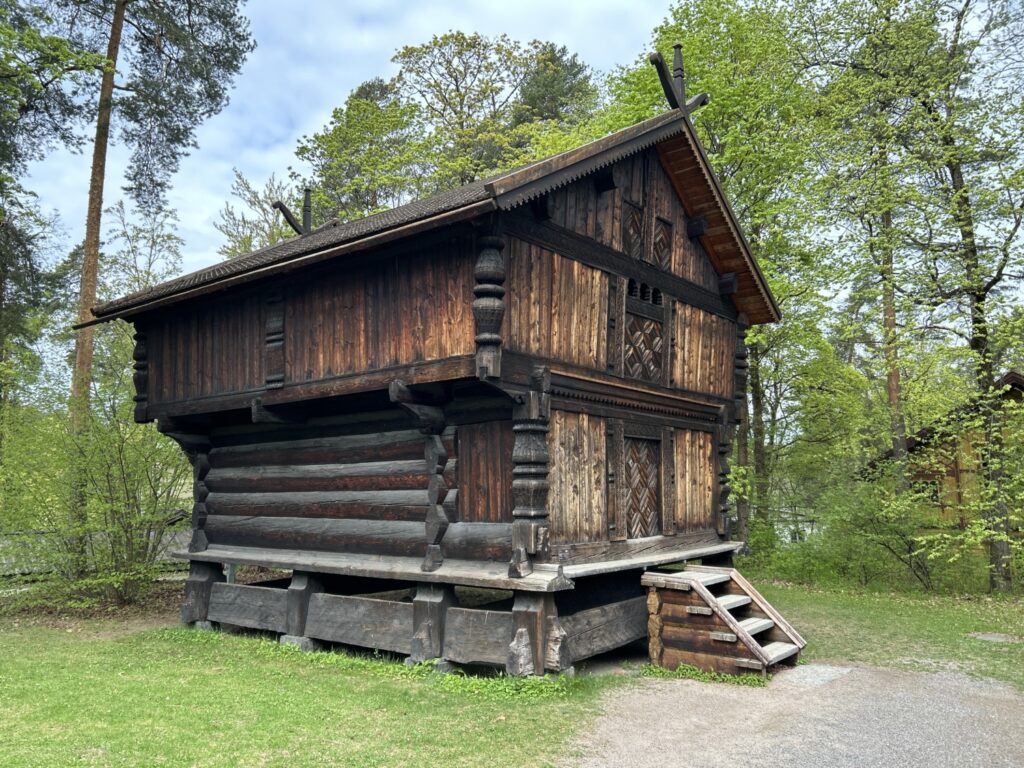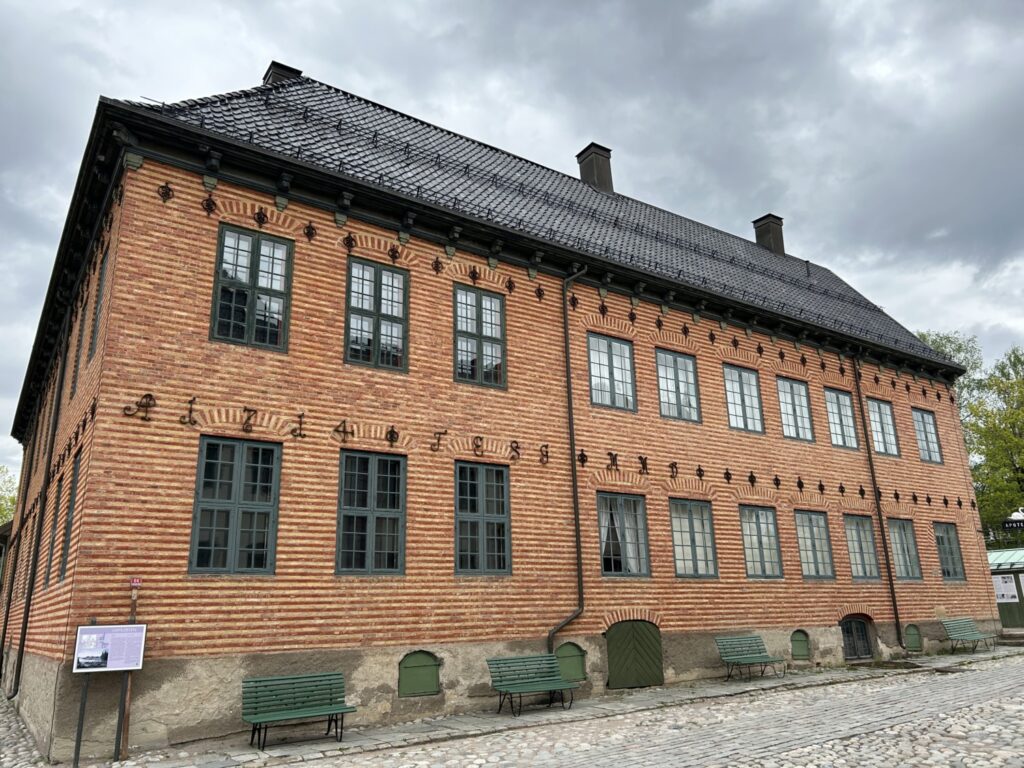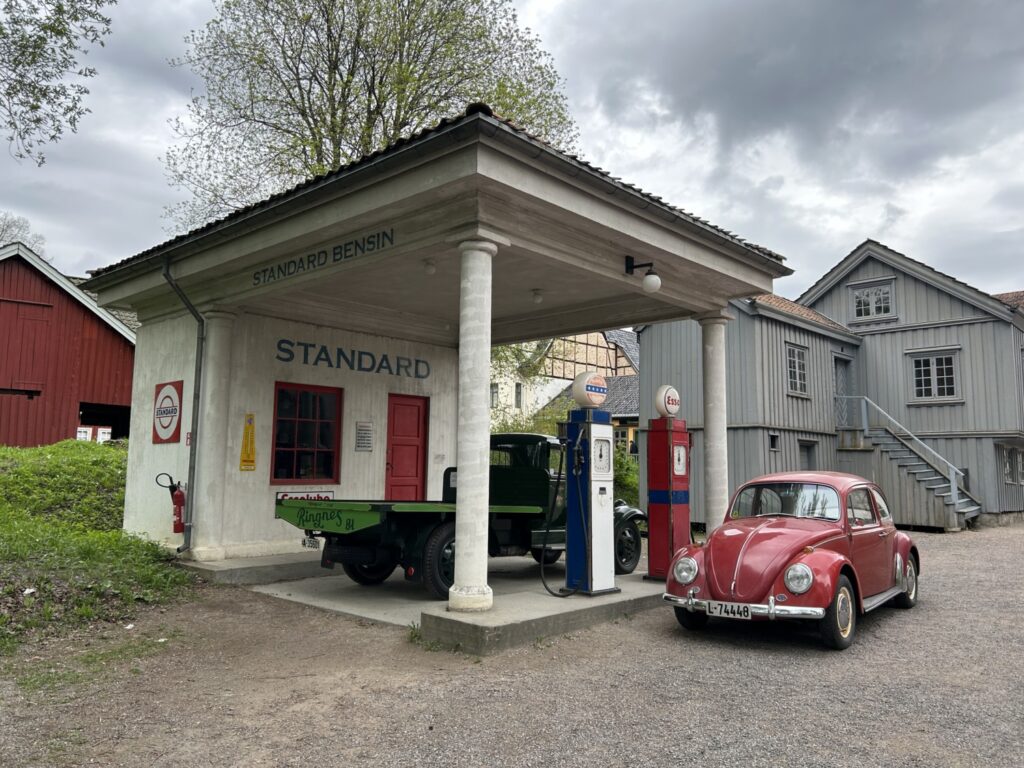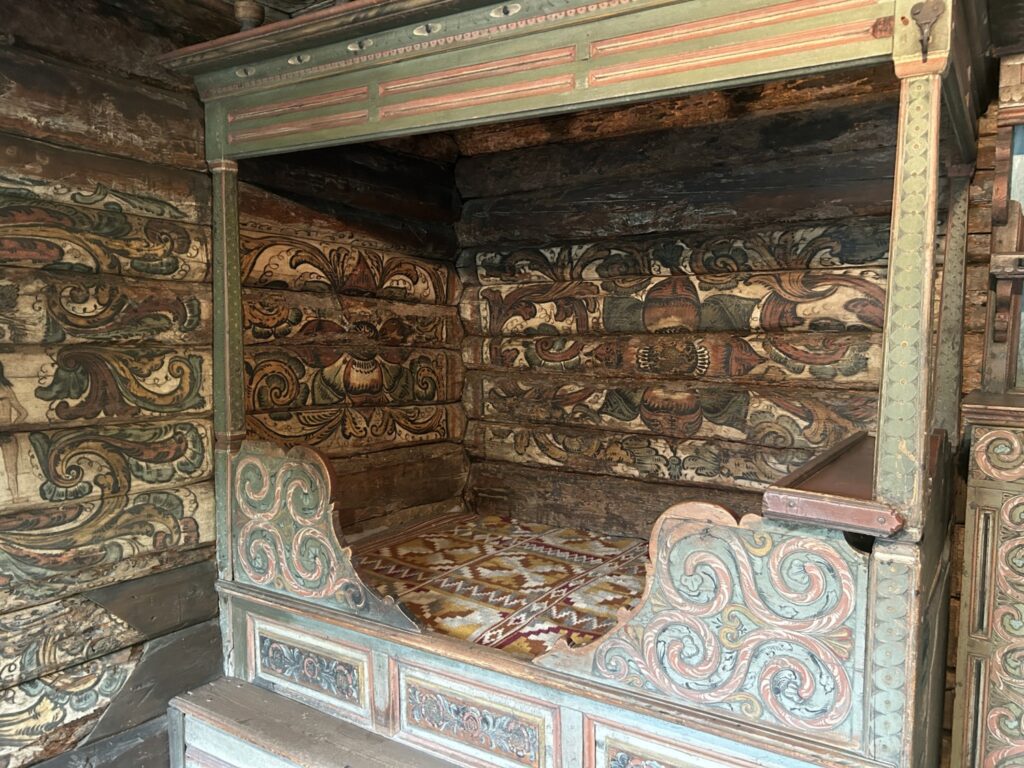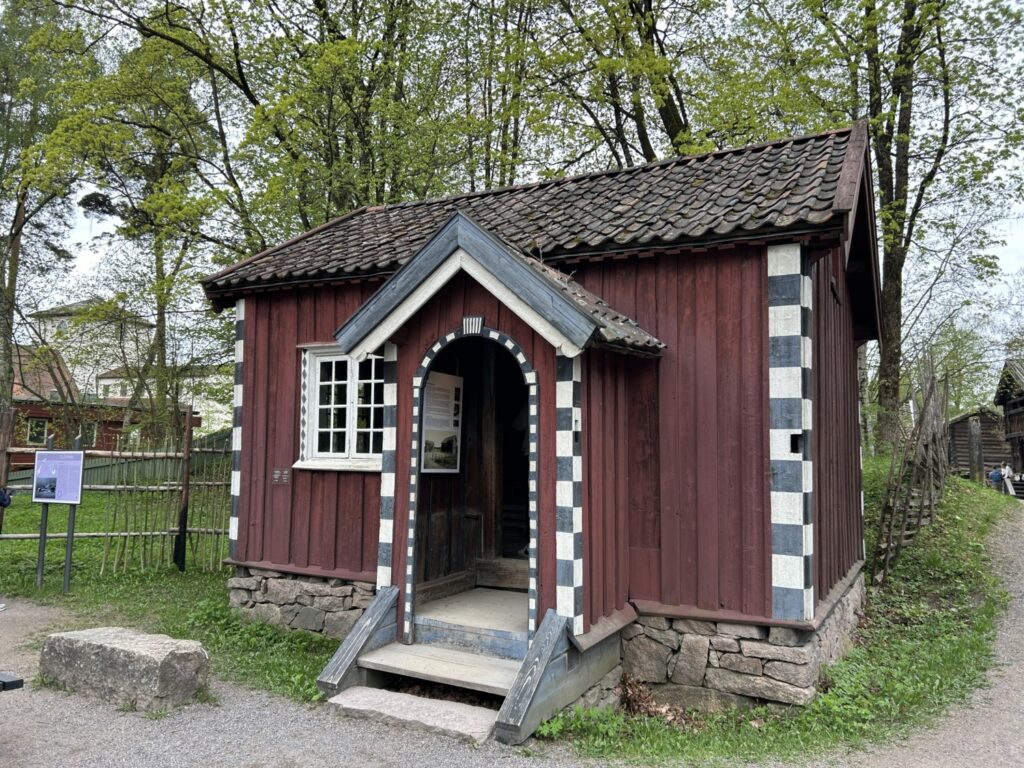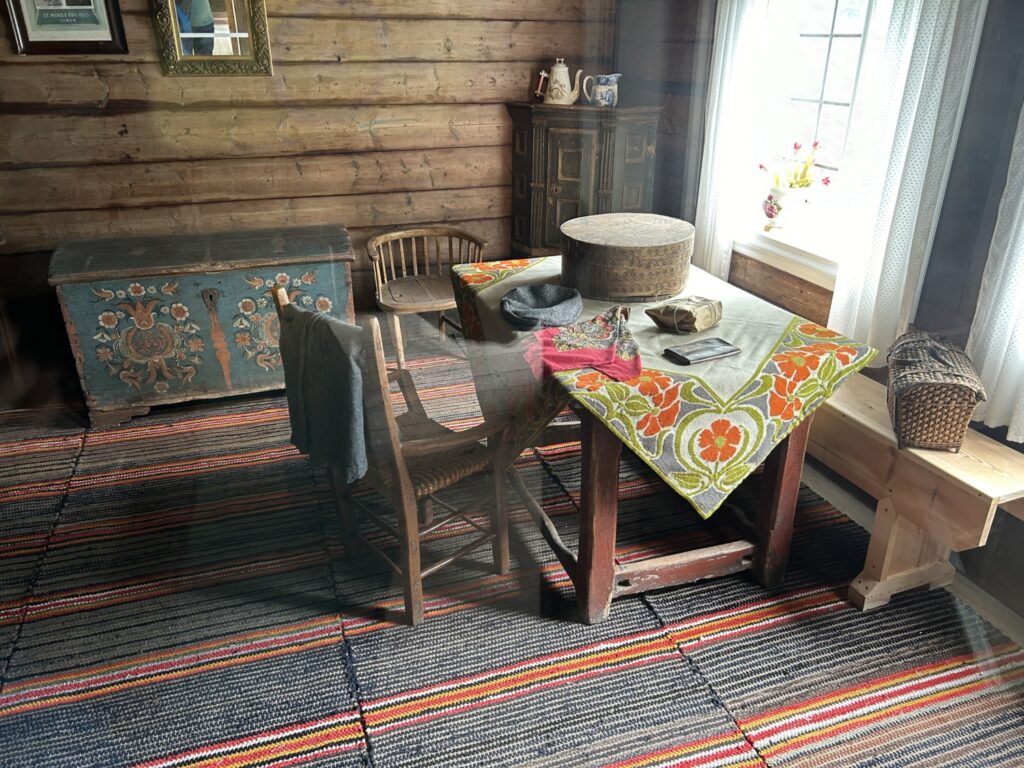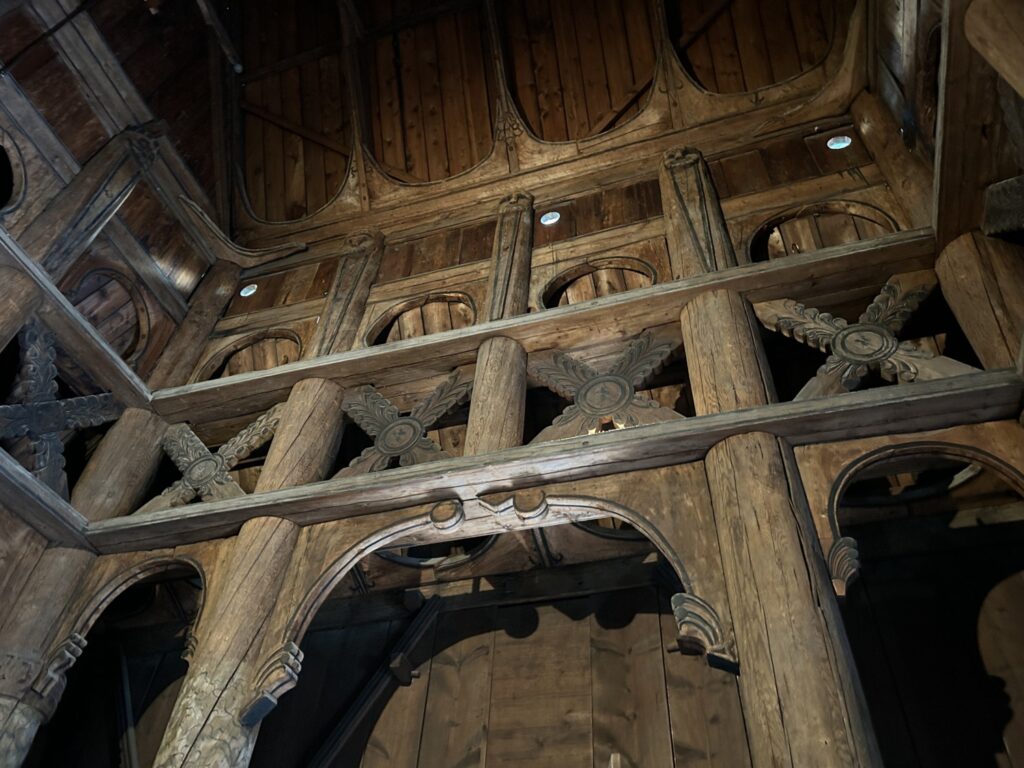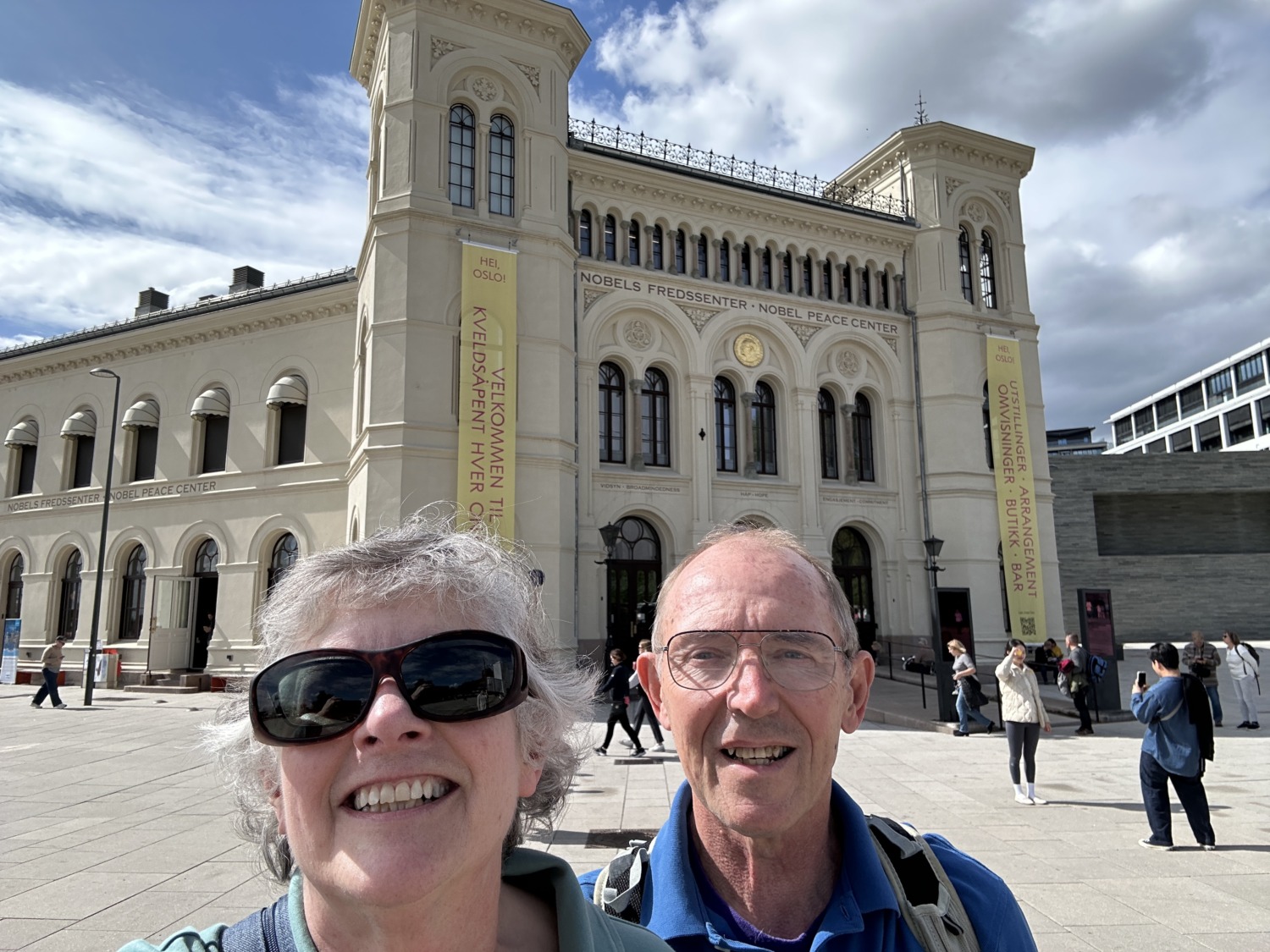Our second port of call in Scandinavia was Oslo, Norway. Oslo is the capital and most populous city in Norway. Over a million people live in the metro area. Oslo was founded as a trading center in 1040 and gradually grew from there. Today the economy is dependent on shipping, banking, and being the seat of government.
The ship docked in the downtown area, just blocks from the City Hall and other government buildings. From the ship we had a good view of the harbor, the busy ferry docks, and all the parks in the downtown area. Oslo is a beautiful city with lots of green space. The downtown has very little traffic thanks to pedestrian only areas and reliable, fast mass transportation.
Tom and I had a long list of possibilities for Oslo. We could easily have spent three days there. But we only had six hours so we narrowed the list down. The Viking Ship Museum was something we really wanted to see, but it is being rebuilt and is closed until 2026 or 2027. With that off the list, we decided on three targets for our six hours: The Norske Folkemuseum, The Fram Museum, and Akershus Fortress.
We debated taking a water ferry, the bus, or a Hop-on, Hop-off tour bus to Bygdoy, which is the museum peninsula. In the end we decided our time was more important than saving money, so we took a taxi. It dropped us off right in front of the Norske Folkemuseum and was a reasonable price for the convenience.
The Norske Folkemuseum is dedicated to the cultural history of Norway. This one site has more than 160 historical buildings gathered from around Norway. It was like the Scandinavian Heritage Park in Minot, North Dakota on steroids. We bought our tickets and then headed out to tour the historic buildings.

The park is divided into sections representing different geographical areas of Norway. Within those sections are buildings dating from 1200 to the 1960’s. The oldest building is the Gol Stave Church. A stave church is a wooden design once common in northern Europe. The name derives from the building’s structure of post and lintel construction, where the load-bearing posts are called stav in Norwegian. Because all the buildings at the Norske Folkemuseum are reconstructed, they include bits from different historic buildings. The church had an altarpiece from the Middle ages, and wood carvings from the 1700’s.
Most of the sections in the park had a farmhouse and outbuildings representative of the region. In the summer, living historians make the different areas come alive. Because we visited in May, before the summer season started, we saw four people engaged in different activities. One couple was in the church and the village home beside it. A man was being the grocer in town.
One woman was cooking in a suburban cottage. I thought the suburban cottages were interesting. When I think of suburbs, I think of the 1950’s. In Oslo, the suburbs started much earlier. When a huge fire destroyed most of the town in 1624, King Christian IV built a new city around Akershus Fortress and decreed that buildings in the city had to be made of brick or stone. Most people couldn’t afford that, so many people moved outside the city limits in order to build homes made of wood. The examples of suburban cottages at the Norske Folkemuseum were from the 1700’s, 1800’s, and 1900’s.
I really appreciated all the different periods and regions represented. A lot of the outbuildings and farmhouses looked the same. The museum decorated them according to different periods. For instance, there was an 1850’s farmhouse that had been “modernized” to 1950. These were things the families who lived in them had done before the museum acquired them, and the museum kept the modern touches.
After we toured the historical buildings, Tom and I checked out the exhibits in the museum buildings. We saw an exhibit on the church in Norway, with altarpieces from the middle ages. There was a display on the history of Norwegian knitting (for me) and one on weapons (for Tom). There were displays on tobacco history and one on the Wine Monopoly.
After spending over two hours at the Norske Folkemuseum, Tom and I knew we had to move on. We spotted a #30 bus, which services the museum peninsula, and hopped on. We asked the driver how to pay, and he said we could pay online. We stayed on the bus for the eight minutes it took to get to the Fram Museum, and then hopped off.

The Fram Museum is all about Norwegian polar exploration. The museum is centered around two boats and three explorers. The Fram, commissioned by Fridtjof Nansen, was used to try to reach the magnetic north pole by polar ice drift. It was iced in the polar ice cap for three years. As Tom and I read the stories and looked at the pictures, all we could think was “these guys were crazy!”
The museum highlights many polar expeditions:
- The First Crossing of Greenland (1888-1889)
- The First Fram Expedition (1893-1896)
- The Second Fram Expedition (1898-1902)
- The Gjøa Expedition (1903-1906)
- The Third Fram Expedition (1910-1914)
- The Maud Expedition (1918-1925)
- The N24/N25 flight towards the North Pole (1925)
- The Norge flight (1926).
In addition to the Fram, the museum also houses the Gjoa, which was the first ship to travel the Northwest Passage, captained by Roald Amundsen. We climbed on the ships and studied all the exhibits. One things we really enjoyed was the interactive display when we were onboard the Fram. They had a projection system that showed what the explorers would have seen from the deck of the ship. There was also a mechanized teeter-totter that moved as the ship’s deck would have moved. It really moved during the projected storm!

By the time we finished at the Fram, four hours of our time had slipped away We took the water ferry back to the city center, thinking we would head for the ship. But when we arrived, we realized the ferry dock was halfway between the Akershus Fortress and our ship, less than a mile in either direction. Instead of heading for the ship, we walked to the Akershus Fortress.
Construction started on Akershus Castle and Fortress in 1299 under the direction of King Hakon V. It was built as a royal residence and for protection for the city. Guided tours are available of the grounds and the castle. The fortress also houses the Norwegian Resistance Museum and the Norwegian Military Museum. Two places we really wanted to see, but didn’t have time for. Instead, we contented ourselves with walking around a grounds and taking a few pictures of the walls and the church.
Akershus Fortress is very large with many buildings scattered throughout. The fortress itself is free, but there is an admission charge for the castle and the museums. After exploring some of the cobblestoned walkways, we reluctantly headed back to the ship. On the way we stopped to take a picture of the Nobel Museum, where the annual awards are granted. Tom had me take a picture of us out front, because he said it was the closest he would ever get to a Nobel prize.
As we were walking back to the ship, we saw a place called Bollebar. Having tasted a delicious bolle the day before, we decided to go in. There they were, in all their glory – a dozen different kinds of bolle. We got a chocolate bolle with sprinkles to share, although many of the other kinds looked delicious. It was just as good as the one the day before – chewy and sweet with just enough vanilla custard to be moist. The bolle gave us the energy to walk the rest of the way to the ship and wait until supper to eat.

We had a wonderful day in Oslo, although it was much too short. If we had more time we would have done the Hop-On, Hop-Off Trolley, visited the museums at the fortress, shopped along Karl Johans Gate, and walked around the Vigeland Sculpture Park. Oh well. We have a good reason to return to Oslo someday.




